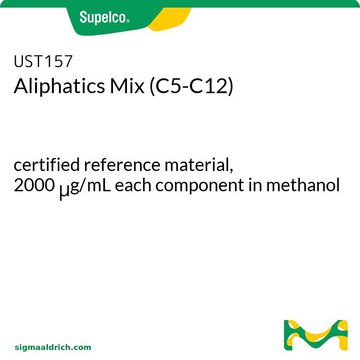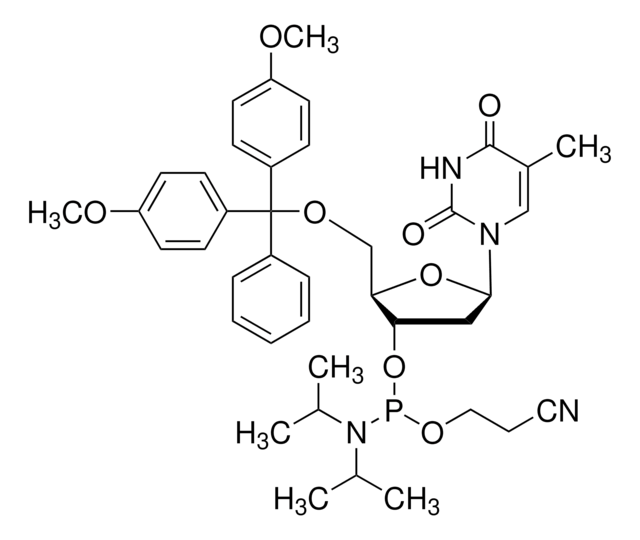1.01126
Ammonium dihydrogen phosphate
for analysis EMSURE® ACS,Reag. Ph Eur
Synonym(s):
Ammonium dihydrogen phosphate, Ammonium biphosphate, Ammonium phosphate monobasic, Primary ammonium phosphate, Monoammonium orthophosphate
About This Item
Recommended Products
grade
ACS reagent
Quality Level
Agency
reag. Ph. Eur.
vapor pressure
0.066 hPa ( 125 °C)
product line
EMSURE®
Assay
≥99.0% (acidimetric)
form
solid
potency
5750 mg/kg LD50, oral (Rat)
>7940 mg/kg LD50, skin (Rabbit)
impurities
≤0.005% Insoluble matter
pH
3.8-4.4 (20 °C, 50 g/L in H2O)
mp
190 °C
density
1.80 g/cm3 at 20 °C
bulk density
800‑1100 kg/m3
anion traces
chloride (Cl-): ≤0.0005%
nitrate (NO3-): ≤0.001%
sulfate (SO42-): ≤0.005%
cation traces
Ca: ≤0.001%
Fe: ≤0.001%
K: ≤0.005%
Mg: ≤0.0005%
Na: ≤0.005%
heavy metals (as Pb): ≤0.0005%
storage temp.
2-30°C
InChI
1S/H3N.H3O4P/c;1-5(2,3)4/h1H3;(H3,1,2,3,4)
InChI key
LFVGISIMTYGQHF-UHFFFAOYSA-N
Looking for similar products? Visit Product Comparison Guide
Related Categories
Application
- Synthesis and characterization of hydroxyapatite nanoparticles from calcium hydroxide fouled with gases evolved from smokestack of glass industry.: This research explores the synthesis of hydroxyapatite nanoparticles using ammonium dihydrogen phosphate, detailing the process and analytical chemistry techniques involved. The study provides insights into the potential environmental and industrial applications of this method, offering an innovative approach to materials synthesis (Abdelmoaty and Mousa, 2024).
- Acid etching-induced nanocutting of LaNiO(3) transplanting self-assembled photodiode array-like LaNiO(3)/N,P-RGO nanoreactor for efficient photocatalytic hydrogen evolution.: This article discusses the use of ammonium dihydrogen phosphate in creating LaNiO(3) based nanoreactors through acid etching techniques. The resulting materials show promising applications in photocatalysis and hydrogen production, illustrating the compound′s utility in renewable energy technologies (Zou et al., 2024).
- Sustainable and Environmentally Friendly Microwave Synthesis of Nano-Hydroxyapatite from Decarbonized Eggshells.: This study utilizes ammonium dihydrogen phosphate in a green chemistry process to synthesize nano-hydroxyapatite from eggshells, emphasizing the environmental benefits and sustainability of this approach in materials science (Mahmoud, 2024).
- A Self-Powered Biochemical Sensor for Intelligent Agriculture Enabled by Signal Enhanced Triboelectric Nanogenerator.: This innovative research uses ammonium dihydrogen phosphate in the development of a self-powered biochemical sensor for agricultural applications, highlighting its role in enhancing device sensitivity and sustainability (Gao et al., 2024).
- Therapeutic drug monitoring of vancomycin in surgical patients through a validated HPLC method.: In this clinical study, ammonium dihydrogen phosphate is employed as part of a high-performance liquid chromatography (HPLC) method for monitoring vancomycin in surgical patients, demonstrating its crucial role in improving analytical accuracy and patient care (Akram et al., 2024).
Linkage
Analysis Note
Insoluble matter: ≤ 0.005 %
pH-value (5 %; water, 25 °C): 3.8 - 4.4
pH-value (2.3%; water): about 4.2
Chloride (Cl): ≤ 0.0005 %
Nitrate (NO₃): ≤ 0.001 %
Sulfate (SO₄): ≤ 0.005 %
Heavy metals (as Pb): ≤ 0.0005 %
Ca (Calcium): ≤ 0.001 %
Fe (Iron): ≤ 0.001 %
K (Potassium): ≤ 0.005 %
Mg (Magnesium): ≤ 0.0005 %
Na (Sodium): ≤ 0.005 %
corresponds to ACS,Reag. Ph Eur
Legal Information
Not finding the right product?
Try our Product Selector Tool.
Storage Class Code
13 - Non Combustible Solids
WGK
WGK 1
Flash Point(F)
Not applicable
Flash Point(C)
Not applicable
Regulatory Listings
Regulatory Listings are mainly provided for chemical products. Only limited information can be provided here for non-chemical products. No entry means none of the components are listed. It is the user’s obligation to ensure the safe and legal use of the product.
EU REACH Annex XVII (Restriction List)
Certificates of Analysis (COA)
Search for Certificates of Analysis (COA) by entering the products Lot/Batch Number. Lot and Batch Numbers can be found on a product’s label following the words ‘Lot’ or ‘Batch’.
Already Own This Product?
Find documentation for the products that you have recently purchased in the Document Library.
Customers Also Viewed
Our team of scientists has experience in all areas of research including Life Science, Material Science, Chemical Synthesis, Chromatography, Analytical and many others.
Contact Technical Service








